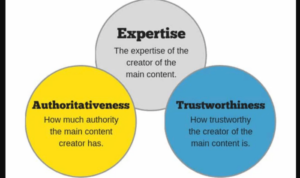Writing for a Target Audience takes center stage, inviting readers into a world of tailored communication that resonates with diverse groups. Get ready to explore the power of personalized content!
In today’s digital age, understanding your target audience is key to creating impactful content that drives engagement and boosts conversion rates. Let’s dive into the art of crafting messages that truly connect with your readers.
Importance of Writing for a Target Audience

Understanding the target audience is crucial for effective communication as it allows writers to tailor their content to meet the specific needs, preferences, and interests of the intended readers. By crafting content that resonates with the target audience, writers can establish a connection, build trust, and ultimately drive engagement and conversion rates.
Tailored Content Resonates Better
Tailored content can resonate better with specific audiences by addressing their unique challenges, providing solutions to their problems, and using language and tone that they can relate to. For example, a fashion blog targeting teenage girls would use trendy language, vibrant visuals, and focus on topics that are relevant to this demographic, such as the latest fashion trends and beauty tips. This tailored approach would likely attract more teenage girls to engage with the content compared to a generic fashion blog that does not cater to their specific interests.
Impact on Engagement and Conversion Rates
Writing for a target audience has a significant impact on engagement and conversion rates. When content is tailored to the preferences of the target audience, readers are more likely to stay engaged, interact with the content, and take desired actions such as making a purchase, signing up for a newsletter, or sharing the content with others. This personalized approach can lead to higher conversion rates as the content speaks directly to the needs and interests of the target audience, making them more likely to respond positively to the call-to-action.
Identifying the Target Audience

Identifying the target audience is crucial for effective writing as it helps tailor the content to meet the needs and preferences of the intended readers. By understanding who the audience is, writers can create more engaging and relevant material that resonates with them.
Defining the Target Audience
To define the target audience, writers need to consider demographics, psychographics, and behavior patterns. Demographics include factors such as age, gender, income level, education, and occupation. Psychographics delve into the audience’s values, attitudes, interests, and lifestyles. Behavior patterns refer to how the audience interacts with content, what media they consume, and their purchasing habits.
- Conduct surveys or polls to gather information on demographics and preferences.
- Utilize analytics tools to track website traffic and social media engagement.
- Observe and analyze feedback from existing readers or customers.
- Research industry trends and market data to understand the target audience’s needs.
Understanding the target audience allows writers to create content that speaks directly to their interests and concerns.
Tailoring Content for Different Audiences: Writing For A Target Audience
To effectively reach diverse target audiences, it is essential to tailor writing style, tone, and language accordingly. By understanding the unique characteristics and preferences of different demographics or interest groups, content creators can create more engaging and impactful communication.
Adapting Writing Style, Tone, and Language
When targeting younger audiences, such as Gen Z, utilizing a casual and conversational writing style with relevant pop culture references can resonate well. On the other hand, for a more formal audience, like business professionals, a more professional tone with industry-specific jargon may be appropriate. It is crucial to adapt the language complexity, sentence structure, and overall tone to match the expectations of the audience.
- For example, a beauty brand targeting teenage girls may use trendy slang and emojis in their social media posts to connect with their audience on a more personal level.
- Conversely, a financial institution targeting middle-aged adults may use a more formal tone and technical language to convey trust and expertise.
Cultural Sensitivity and Inclusivity, Writing for a Target Audience
In writing for different audiences, cultural sensitivity and inclusivity play a vital role in ensuring that all individuals feel represented and respected. It is important to avoid stereotypes, offensive language, or assumptions about a particular group to maintain a positive and inclusive communication environment.
- For instance, when creating content for a multicultural audience, incorporating diverse perspectives and experiences can help promote understanding and unity.
- Similarly, being mindful of cultural nuances, traditions, and sensitivities can prevent unintentional harm or misinterpretation of the message.
Crafting Messages that Resonate
Crafting messages that resonate with a specific target audience involves using techniques that create compelling and relevant content tailored to their needs, pain points, and interests.
Addressing Needs, Pain Points, and Interests
To address the needs, pain points, and interests of the target audience in writing, it’s essential to conduct thorough research and understand their demographics, preferences, and challenges. By empathizing with their struggles and aspirations, you can create content that speaks directly to their concerns and offers valuable solutions.
- Identify common pain points: Conduct surveys, interviews, or social listening to pinpoint the key challenges your audience faces.
- Offer solutions: Provide actionable advice, tips, or resources that address these pain points and add value to your audience’s lives.
- Show empathy: Use language that shows you understand and care about your audience’s struggles, fostering a sense of trust and connection.
Incorporating Storytelling and Emotional Appeal
Storytelling and emotional appeal are powerful tools for connecting with your target audience on a deeper level. By weaving narratives and evoking emotions in your writing, you can create a more memorable and impactful message that resonates with your audience.
- Use personal anecdotes: Share stories that your audience can relate to, creating a personal connection and humanizing your content.
- Evoke emotions: Appeal to your audience’s emotions by using powerful language, imagery, and storytelling techniques that elicit feelings of empathy, joy, or inspiration.
- Create a journey: Take your audience on a journey through your content, building suspense, excitement, and engagement as they follow along with your narrative.










